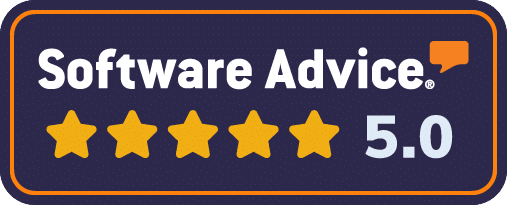Identifying and Solving Common Team Issues
Working in a team can be a powerful experience. It can also be fraught with challenges. Common team problems often stem from communication barriers and ineffective leadership. These issues can hinder productivity and create a tense work environment.
In this article, we’ll explore common team problems, their root causes, and practical solutions. We aim to provide insights that can help you identify and solve some of the most common issues that teams face.
Understanding Common Team Problems
Teams face various issues that can impede success. Identifying these problems is crucial. Common team problems include poor communication, lack of clear goals, and conflicts among members.
Role ambiguity can also cause confusion and stress. Team members unsure of their roles are less likely to perform effectively.
Let’s consider some typical team problems:
- Communication barriers
- Ineffective leadership
- Role ambiguity
- Lack of clear objectives
Each of these problems requires specific attention. Addressing them can significantly improve team dynamics. Taking time to understand the root causes is a necessary step towards finding practical solutions.
The Impact of Communication Barriers
Communication barriers can severely impact team performance. Misunderstandings often arise from poor or unclear communication methods.
This can lead to mistakes, missed deadlines, and frustration. Teams must prioritize clear and open communication. Effective communication ensures everyone is on the same page. Addressing communication barriers can lead to more harmonious and productive work environments.
The Role of Team Leadership
Team leadership plays a crucial role in resolving team issues. Effective leaders guide their teams by setting clear expectations and fostering a collaborative atmosphere.
Leaders must be adaptable, addressing team needs as they arise. They help manage conflicts, facilitate communication, and inspire team members.
A strong leader can transform team challenges into opportunities for growth. Investing in leadership skills development can greatly enhance team performance.
Conflict Management Strategies
Conflict in teams is inevitable, but manageable. Understanding conflict management strategies is key to maintaining a healthy team environment. The right approach can turn conflicts into opportunities for improvement.
Effective conflict resolution promotes understanding and cooperation. Here are some strategies to consider:
- Encourage open dialogue.
- Practice active listening.
- Address issues promptly.
- Focus on common goals.
Implementing these strategies can significantly reduce team tensions. It’s important for team members to feel heard and valued. A proactive approach to conflict management fosters a positive work atmosphere.
Building Trust and Accountability
Trust and accountability are cornerstones of successful teams. Building trust within a team enhances collaboration and commitment. Trust enables team members to rely on one another.
Accountability ensures team members take responsibility for their actions. This builds reliability and respect among the team. A transparent environment encourages accountability. Cultivating trust and accountability requires consistent effort but pays off with improved team dynamics.
Handling Resistance to Change
Resistance to change is common and can derail team progress. Understanding the reasons behind resistance is essential. Change can cause fear or discomfort among team members.
To address this, leaders should communicate the benefits of change clearly. Involving team members in the process can reduce apprehension. Offering support and resources helps ease the transition.
Embracing change with empathy can turn potential resistance into enthusiasm for new initiatives. A flexible and understanding approach ensures smoother adaptation to changes.
Enhancing Team Performance
Improving team performance is crucial for achieving success. It requires a focus on several key areas. Identifying and addressing performance gaps is the first step.
A high-performing team often shares certain traits. Consider these elements that contribute to team success:
- Clear communication.
- Defined roles and responsibilities.
- Regular feedback and acknowledgment.
- Collaborative problem-solving.
Fostering a culture of improvement is essential. Continuous learning and adaptation drive performance enhancements. Encouraging innovation and creativity can also boost team output.
Ultimately, the path to better performance involves aligning team efforts with organizational goals. By focusing on these areas, teams can unlock their full potential.
Setting Clear Goals and Roles
Clear goals and roles are foundational for team success. Teams that lack direction often struggle to achieve their objectives. Defining specific, achievable goals provides a roadmap for success.
Each team member should understand their role and its significance. This clarity minimizes misunderstandings and confusion. Assigning tasks aligned with skills ensures efficiency and satisfaction.
Consistent review and adjustment of goals help maintain focus. As circumstances change, flexibility is essential. With well-defined goals and roles, teams can pursue their objectives with confidence and unity.
Encouraging Regular Team Meetings
Regular team meetings keep everyone on the same page. They provide a platform for open communication and collaboration. Meetings offer a chance to address issues promptly and share progress.
A well-structured meeting agenda is crucial. It maximizes productivity and keeps discussions focused. Encourage participation from all team members to foster a sense of inclusion.
Scheduled meetings also reinforce accountability. They establish a routine for checking progress against goals. This practice builds trust and transparency, benefiting overall team health. Effective team meetings are a key driver of continuous team improvement.
Conclusion: Fostering a Positive Team Culture
Creating a positive team culture requires commitment from all members. Focus on open communication, trust, and mutual respect. Encourage adaptability and celebrate diverse strengths. A supportive culture not only enhances team unity but also drives long-term success. With dedicated effort, teams can thrive in even the most challenging environments.


